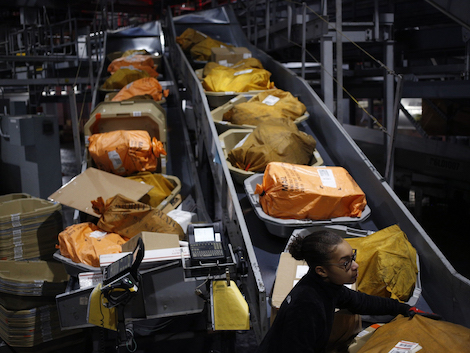


Top 3 Questions Shippers Should Ask Their Procurement Partners
With so many moving parts, finding the right freight procurement resources can be a painstaking process for shippers today. In fact, given how rapidly the freight market can change, finding value, insights, and quality services can be hard to find. With that, here are three important questions shippers should ask when looking for freight procurement resources. What experience do you have in our industry? It’s important to know right off the bat if a prospective procurement resource has experience with similar shippers -- or even competitors -- to you. For example, if the bulk of your shipments are refrigerated, you are going to want to sync up with procurement resources that can give you the best access to climate-controlled trucking capacity. There is nothing worse than not being able to find the capacity you need-- when needed most! So making sure your procurement resources, even backup resources, have the proven experience and success to meet your needs is a must! What are the costs? Hidden and opaque costs are a major issue when it comes to freight procurement/freight management as brokers routinely slap on high fees for themselves each time they facilitate a load. Therefore, shippers need to press for specifics around exactly what the cost structure looks like before they “sign on the dotted line” with a broker or any procurement resource. What does your reporting look like? With the amount of data available today, there is no reason why shippers should be receiving an invoice with one or two line items on it. Instead, shippers should expect -- and deserve -- not only detailed cost breakdowns, but also in-depth pick-up, progress, market pricing data,...
Refrigerated Trucking Capacity Shortage: How to Avoid Sky-High Costs
Originally posted on Food Logistics on 7/12/21. Here are a few key strategies that reefer shippers should keep in mind as refrigerated capacity continues to remain tight. The summer is finally here. And, while generally that is welcome news for many, for manufacturers, shippers and freight procurement teams, summer usually means one thing -- a shortage of refrigerated trucking capacity. Even in the best circumstances, finding available -- and budget-friendly -- refrigerated trucking options during the summer is a major pain point in freight. However, as the Coronavirus disease (COVID-19) pandemic continues to impact the logistics space, this year’s summer shipping season is presenting shippers and freight procurement professionals with a whole new batch of strategy, planning and cost challenges. For example, as the calendar ticked over to May, tender rejection for refrigerated capacity sat at a mind-boggling 41% -- setting the stage for one of the most hectic summer procurement periods in recent memory. Luckily, there are several steps that manufacturers and shippers can take to ease the refrigerated freight headaches they are likely to face over the next several months. With that in mind, here are a few key strategies that reefer shippers should keep in mind as refrigerated capacity continues to remain tight. Bring transportation under the COGS umbrella The food and beverage sector has become strained with rising competition, thinner margins and increased customer demands. Therefore, many food and beverage manufacturers have been searching for ways to drive profitability, while reducing pass-along costs to the end customer. This has resulted in many manufacturers taking steps to find ways to reduce their cost of goods sold (COGS). Yet, for...
State of AI and Real-Time Data in Freight Procurement / Logistics
Worth an estimated $62 billion in 2020, and set to grow at a 40.2% CAGR from 2021 to 2028, the AI industry is exploding. And with so many innovations taking place from healthcare to finance, thanks to AI and real-time data, it isn’t surprising to see that manufacturers, retailers and distributors are looking into how they too can leverage AI and data to improve upon supply chain processes. Now, AI has been getting a huge amount of buzz recently for things such as autonomous vehicles and other futuristic types of tech. And while these might be exciting use cases, there are tangible real world examples where AI and data is already being deployed to drive better results for shippers, specifically during the critical freight procurement process. Here are a few: OTD Management In a world where customer relationships are more important than ever due to the constricting margins of the COVID-19 era, making sure on-time delivery (OTD) rates are as good as they can be is pivotal. Simply put, not only are shippers likely to be on the hook for chargebacks if delivery metrics are not met, but it can also result in unhappy customers that could look elsewhere for better performance. AI is helping shippers better manage OTD performance by providing greater forecasting abilities to avoid possible disruptions, along with real-time updates and communications about how a shipment is progressing. Market Value Given how rapidly the freight procurement market evolves today, understanding the true market value of a load can be incredibly challenging -- especially if a broker is involved. However, new freight procurement software provides real-time freight rate data as carriers bid directly on loads; brokers...
